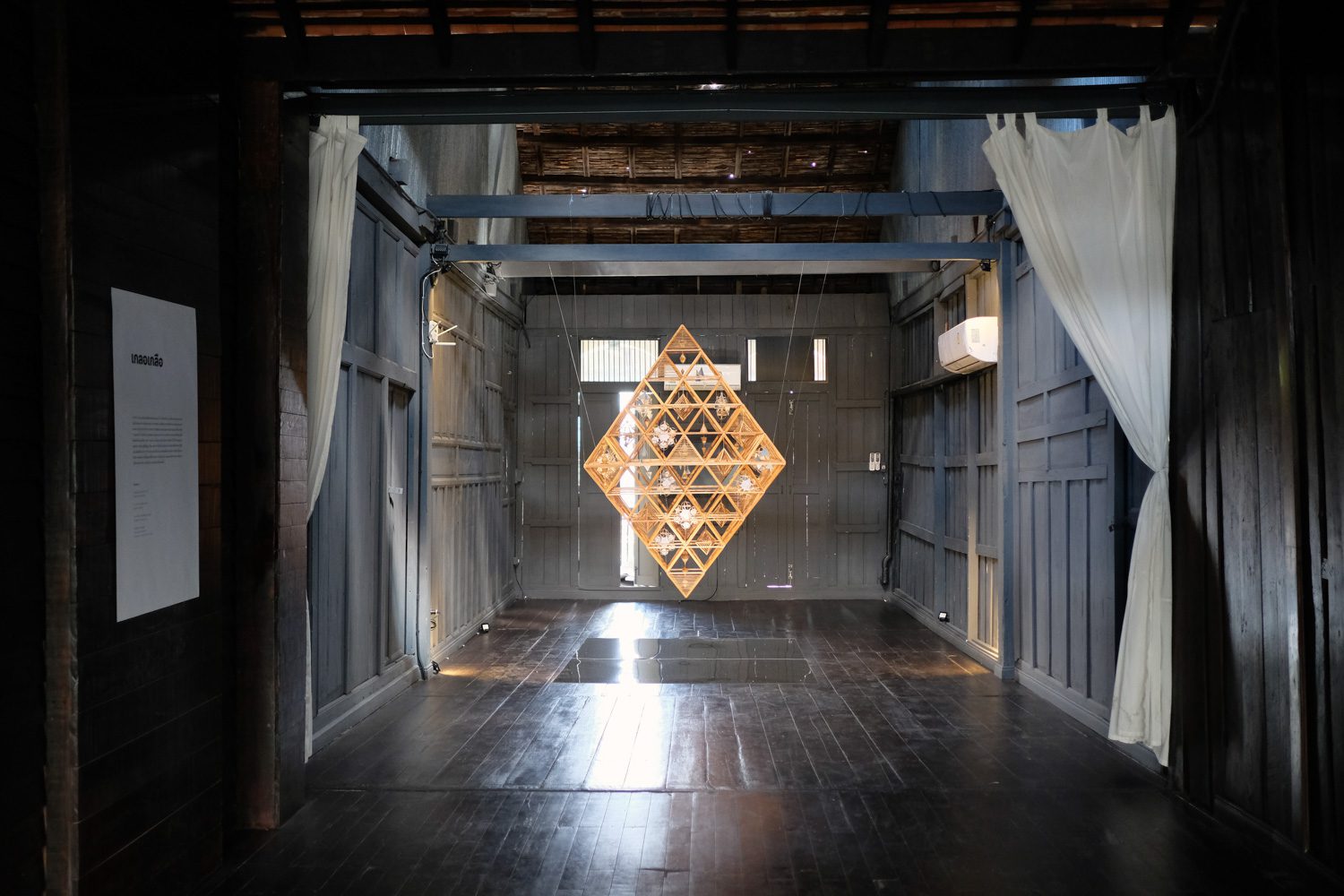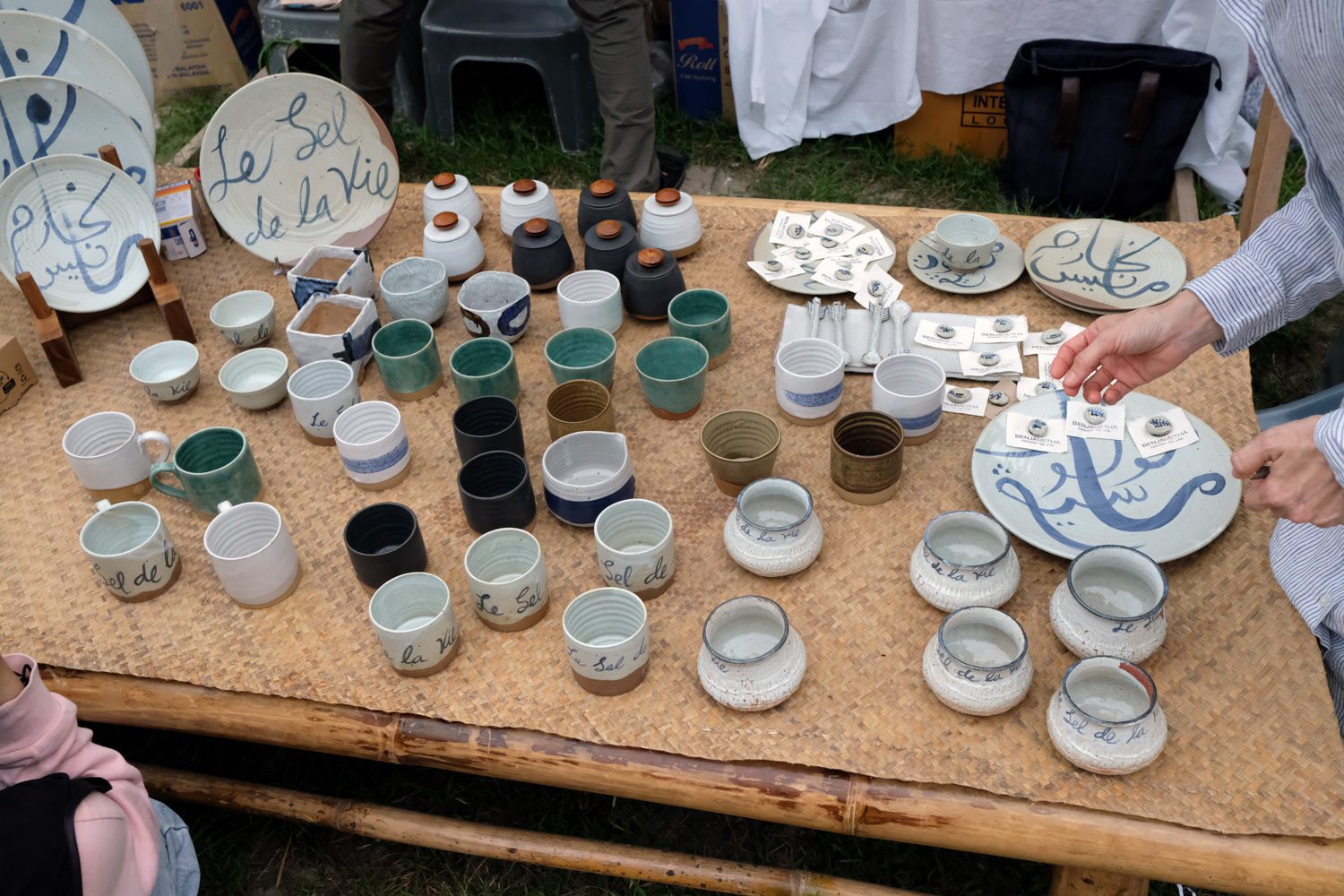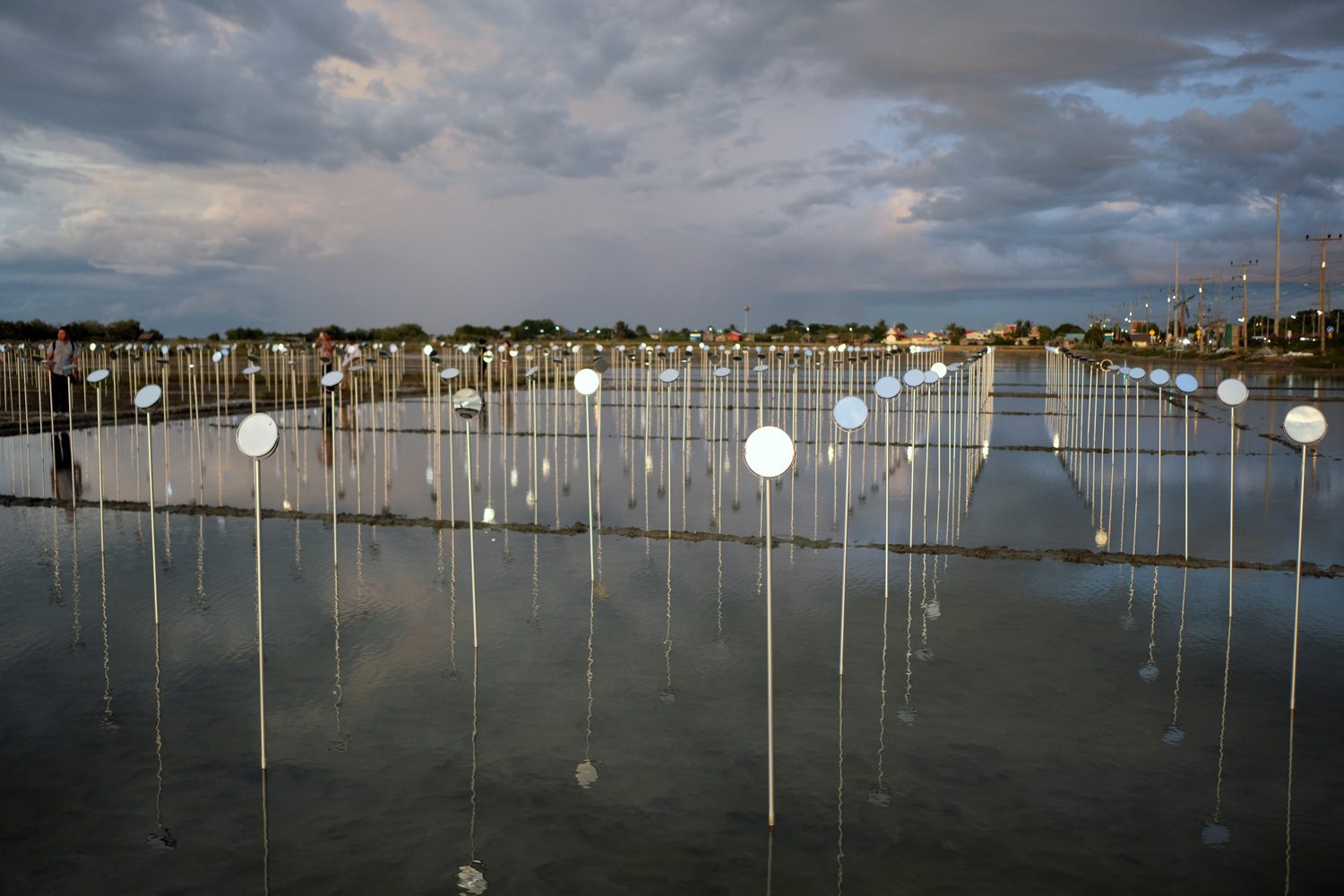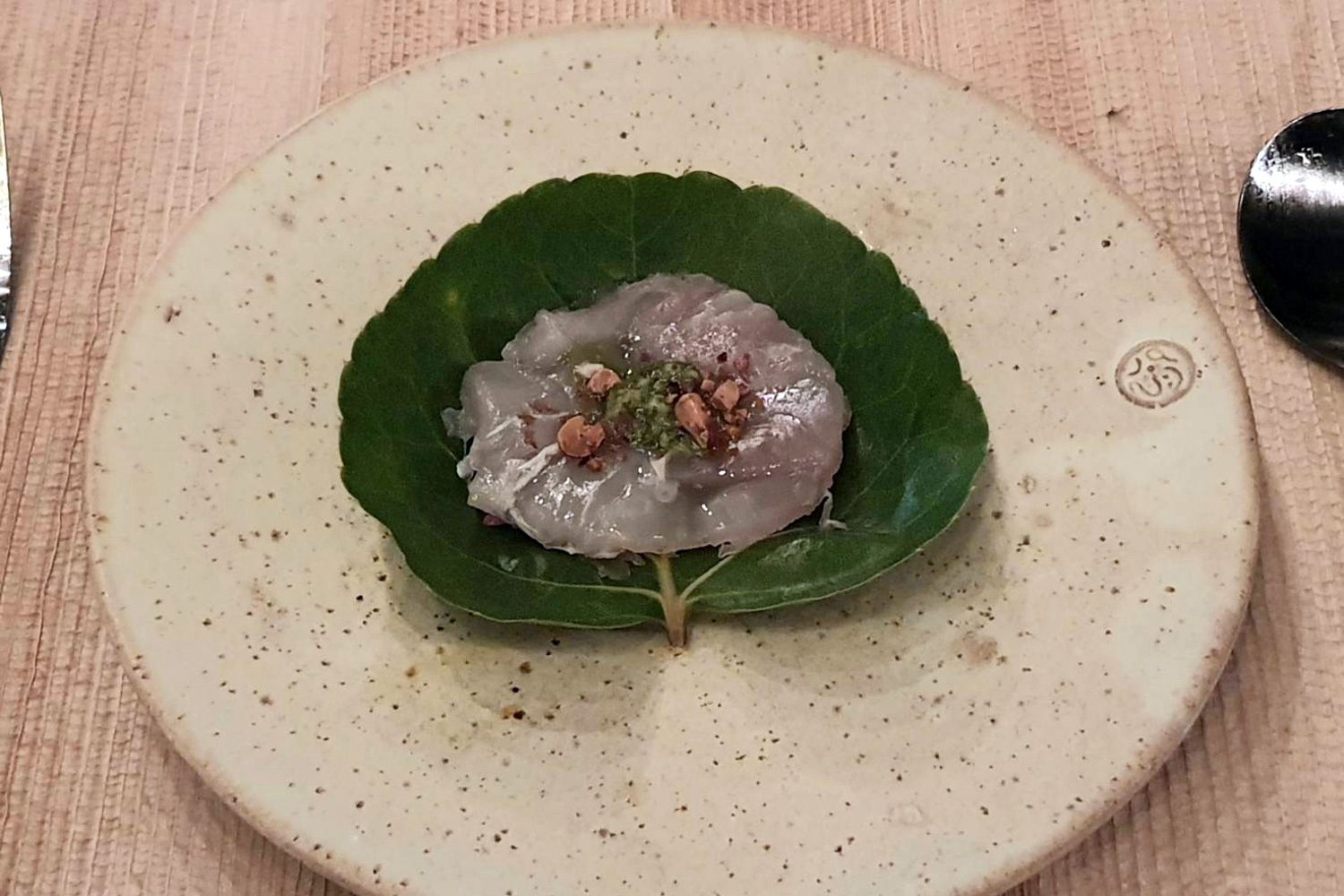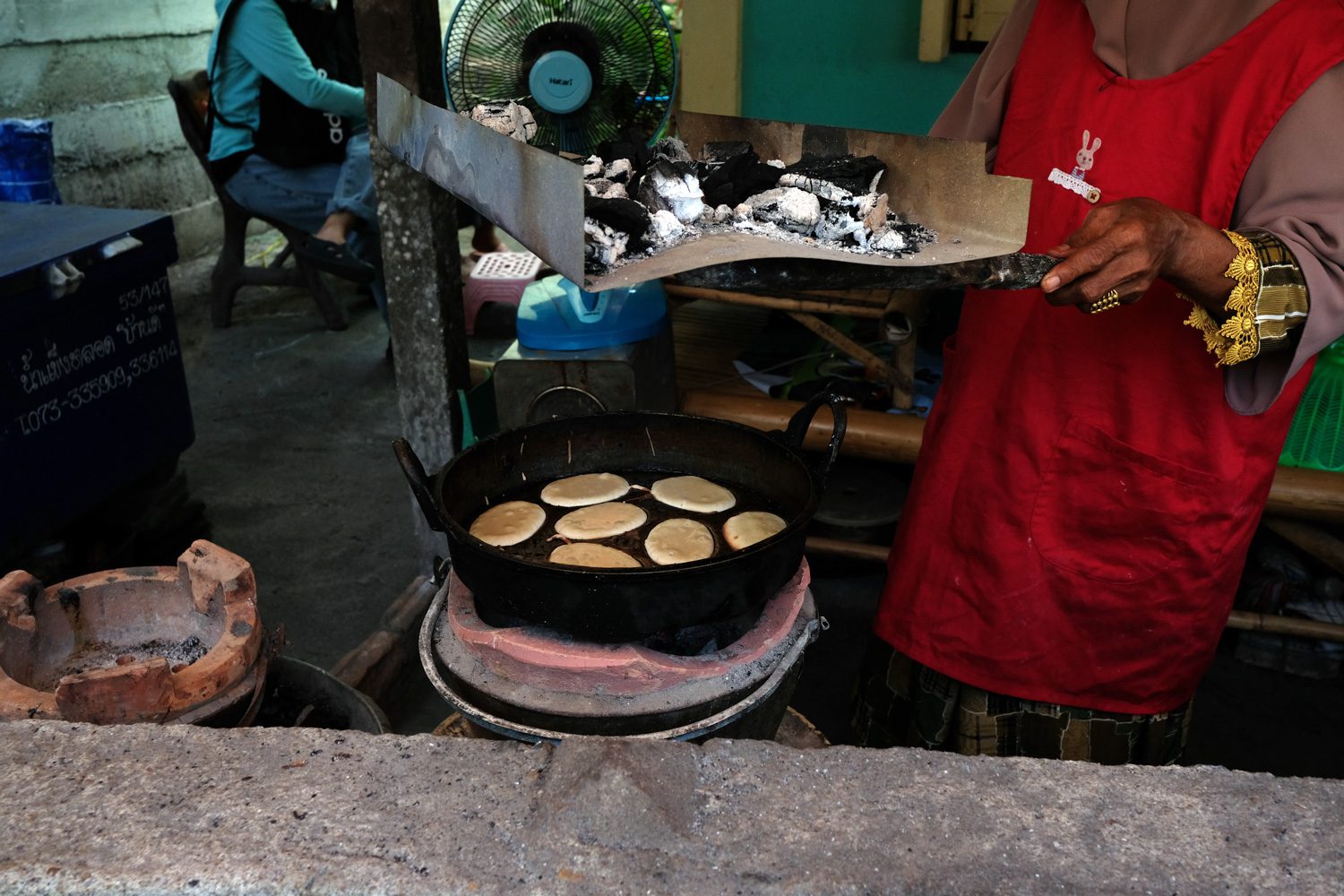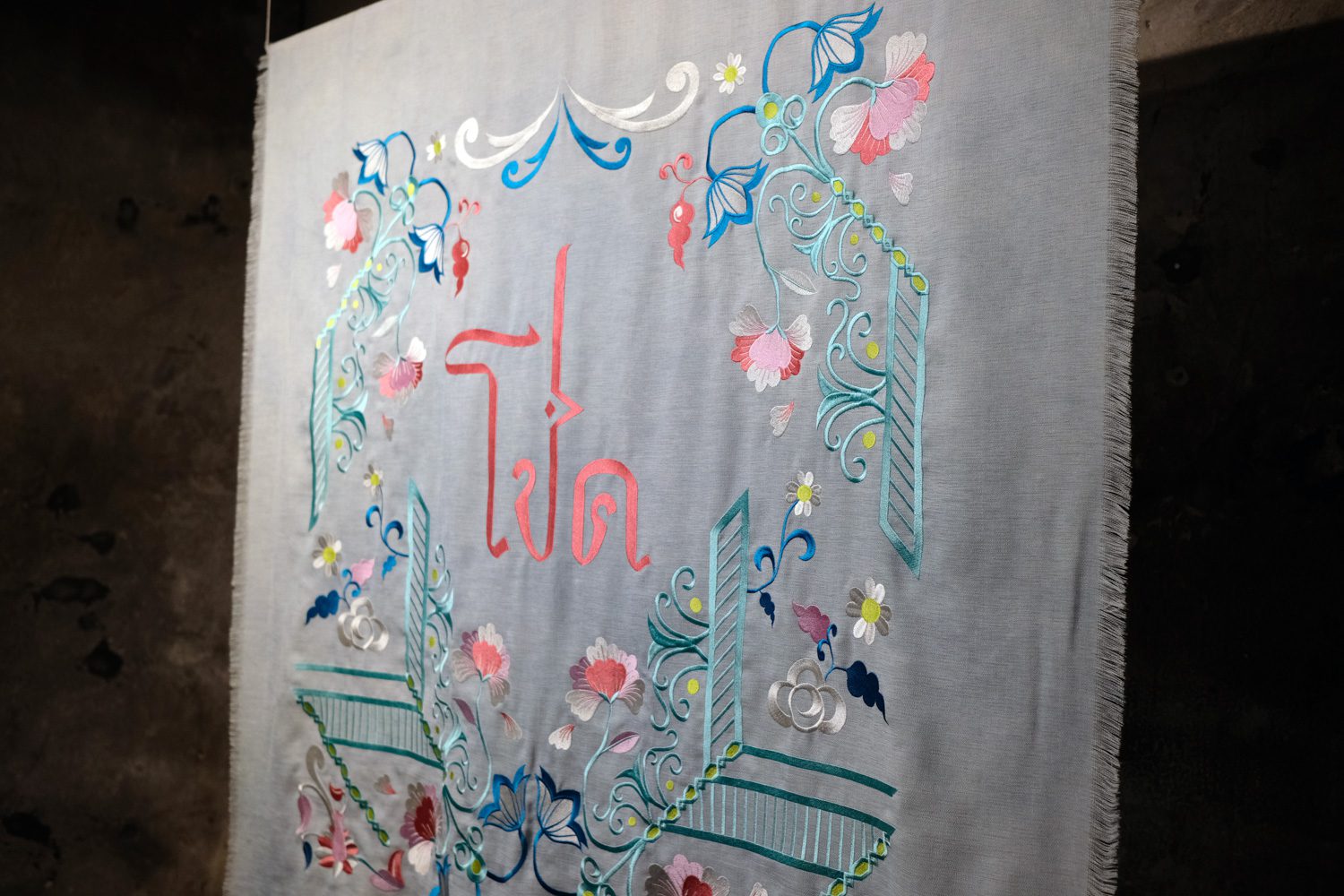A DESIGN FAIR THAT UTILIZES SALT FARMS, POST-ROCK MUSIC, AND LAND ART TO PORTRAY PATTANI’S RICH CULTURAL HERITAGE
TEXT: PITI AMRARANGA
PHOTO: PITI AMRARANGA AND JUTAMAS BURANAJADE
(For Thai, press here)
The announcement of the end of the Emergency Decree, which took full effect on October 1st, 2022, means that Thai people had been living under this law for a total period of two years and six months. For the majority of us, those limitations gradually became familiarity. But two and a half years is only a fraction of what Pattani has gone through. Pattani, as one of the three southern border provinces, has been subject to this special law for 18 years, and there is no end in sight, not even the termination of COVID-19 measures as the pandemic crisis has come to an end. 18 years is a long time, long enough for the area to seem like an isolated territory. Locals and outsiders are estranged, and everyone knows and feels it. We rarely get positive news from the three provinces bordering the south. This is why an occurrence with positive energy like a design festival holds the power that is particularly appealing to outsiders. The arrival of Pattani Decoded, therefore, felt like a breath of fresh air.
Pattani Decoded 2022 was organized by Melayu Living, a creative collective based in Pattani. Taking place between September 2nd and 4th, the event was sponsored by the Creative Economy Agency (CEA), the National Innovation Agency (NIA), and the Tourism Authority of Thailand (TAT). It was hosted for the second time after its debut in 2019, before the pandemic hit. The program this year is more diverse and has more interesting topics. And if you look at the names of the main sponsors, you can kind of figure out what this design festival was supposed to do.
Pattani has always been seen negatively by the general population. I judge this based on how my family reacted when I told them I would be attending the design week there. Many expressed their worry out of their concern for my safety in Pattani, even though they weren’t exactly sure what kind of danger they feared I would encounter in Pattani. To tell you the truth, I didn’t know either. One thing I was convinced of, though, was that a place would be safe enough for me if its residents possessed the kind of spirit that would motivate them to host a design festival. The distance to the destination is 700 kilometers, and it took 19 hours by train to arrive. The travel from Bangkok to Pattani revealed an intriguing yet subtle change. The disparities between individuals and cultures become more obvious. I boarded a minibus from the terminal station to the city center. The 29-kilometer ride occasionally passed military checkpoints. It was new and somewhat exciting, but I didn’t feel like I was entering any sort of danger zone. Aside from the design festival, coming here as a traveler is unquestionably a great experience; being able to enjoy the entire surroundings and ambiance. Through my own eyes, I felt as though I was able to refresh my brain by replacing old information with newer information. Pattani did not appear to be as scary as it was rumored.

After a failed attempt to book a GrabTaxi, I decided to walk to all the venues listed in the festival’s program. The main ground of the festival encompassed three main roads in Pattani’s city center, Anoru, Rudee and Pattanipirom. About one kilometer separates each site, making them all accessible by foot. During the three days I wandered through the exhibition spaces, I could tell that the locals were aware of my presence. Many of the people I spoke with said they saw me at a particular location and time. Possibly because Pattani is a relatively tiny town, or because I am a stranger, I stood out among the residents. Everyone I had the opportunity to speak with typically asked me three questions: Where am I from? What is my purpose here? and Am I not frightened? They paid close attention to all of my responses, which made me think that I wasn’t the only one curious about Pattani. Pattani and its residents was also interested in learning more about me.

The word ‘Deep Salt,’ which I saw on the posters, was the festival’s main theme. It’s simple but profound. Deep salt, also known as ‘Harum Manis’ in Melayu, is a type of sweet salt. The salt, which is made from a combination of Pattani seawater and brackish water, has a distinct, delightful saltiness and is an important part of the region’s rich heritage. Despite the sweet flavor of the salt, bitterness creeps in. With the younger generation shying away from traditional sea salt farming and only a few older locals with the know-hows, utilizing ‘Deep Salt’ as a subject matter for the creative individuals to decode felt like a risk with high stakes. It was also difficult to see how an issue of such complexity could be practically solved through creative methods rather than being used just a gimmick devised to publicize the event.

The night of October 2nd was a Friday and the festival’s official start date. The story had circulated across major news outlets’ social media platforms. Pattani had at least successfully taken its first step. The province was able to attract influencers looking for new content from a town that seemed so new to this type of art and design-oriented event. Many of these people were present, and the whole atmosphere of Pattani as a tourism-friendly town was portrayed, producing quite a bit of soft power for a hitherto disconnected region of the country. I’m not sure if people actually flew to Hat Yai and took a taxi van to get there during the weekends following the opening because of what they saw on the news. But I did witness a traffic jam on both sides of the road along the salt farms because travelers parked their cars to take pictures with the land art ‘Field Work,’ the festival’s icon and one of the highlights designed by Thingsmatter. Whether or not people were aware that the installation was part of the design festival, the land art was able to capture the public’s attention and caused them to stop their car to look at the work, snap pictures with it, and be reminded of the existence of Deep Salt farming in Pattani.

‘21.00-22.00, INSPIRATIVE to join the action in TK Park with their live concert,’ reads the last program of the first night on the festival’s official Facebook page. At nine o’clock, the roads were nearly deserted. I was one of the first people to arrive at the location, and I was seriously doubting how such a building could be hosting a concert. It was my fault for not knowing one of the best post-rock bands in the country. When the band began to play their first song, I turned to the guy next to me and asked, ‘Is this the type of music that people here listen to?’ ‘The vibe was really nice and peaceful.’ Experiencing a terrific concert together made me feel closer to the young crowd in Pattani, who were also enjoying great music, without the need for alcohol, if I may add.
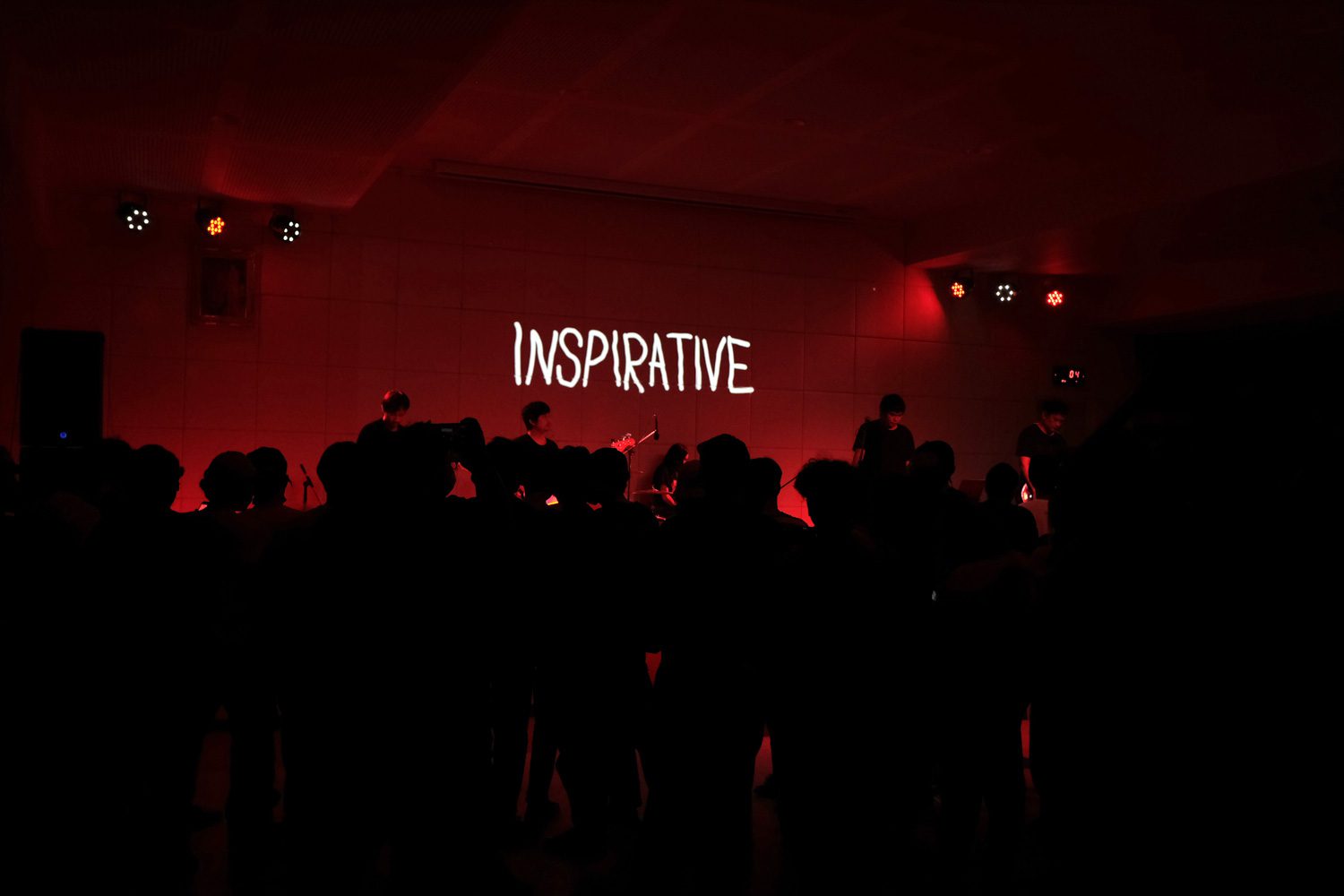
I went on the Special Trip: the Deep Salt of Yesteryear on the second day of the festival. It was essentially a day trip where you could learn about the local art scene, visit Sra Mala Residence, a century-old wooden house, watch Tanyong Lulo Village residents make traditional desserts, and take a boat ride through the cultural route and nature of the Pattani Gulf, which is now home to a learning center. Within a short amount of time, the knowledge offered by Boy, the family’s third generation, assisted me in piecing together the puzzle that remains unresolved in the area. The Grue Sae Mosque was one of the destinations, when the young people who were present on the day of the tragedy told their story. They were prepared to provide answers to everyone who inquired. There were stories of injustice across many of the places we visited; each was like a jigsaw piece for me to collect and one day complete and understand the real, big picture.
One interesting thing I came across when I was strolling through Pattani’s local marketplaces were traditional Muslim desserts, some which I saw for the first time. Even the woman who sold them had to show me how to eat the treats. I was also able to watch how ‘Who Hul’ is made. It’s Pattani’s version of an egg-based delicacy made with just flour, palm sugar, eggs, and salt. It’s not the fluffy egg cake that most Thais are accustomed to. The cake has a nice, sweet smell due to natural yeasts in the dough, which is baked in an ancient wood-fired oven. It’s really sweet, but goes great with a cup of hot tea. All and all, it’s a delicious dessert that can easily be enjoyed by the masses. ‘Azuro’ is another dish with a very special story behind it. I was invited to participate in the mixing process by chance. First off, Azuro is not for sale. The dessert is prepared as part of a religious ceremony that takes place only once a year. The making process is a collaborative effort. With 25 ingredients, the majority of which are grains and herbs, as well as meat for some recipes, the mixing process takes at least five hours before freshly made Azuro is distributed to community members. The flavor is incredibly rich, with a good combination of sweetness and saltiness that is more savory than dessert. It’s a taste I’ve never had before in my life, and it’s only available in the three provinces of Thailand’s deep south.
My final day in Pattani was spent at the festival’s concluding activity, the ‘Chef’s Table,’ where Chef Atip Samosorn made dishes from locally soured ingredients including the deep salt. Every mouthful was brimming with local cultures, flavors, and ways of life. Seafood, local veggies, and dishes were reinterpreted for us to try. A talk with Anusorn Tipayanon clarified why this dinner would be a ray of hope for Pattani’s fading deep salt farming. Designer, Pook Kanchana, presented her blended tea to accompany the courses, and it wonderfully suited the food.
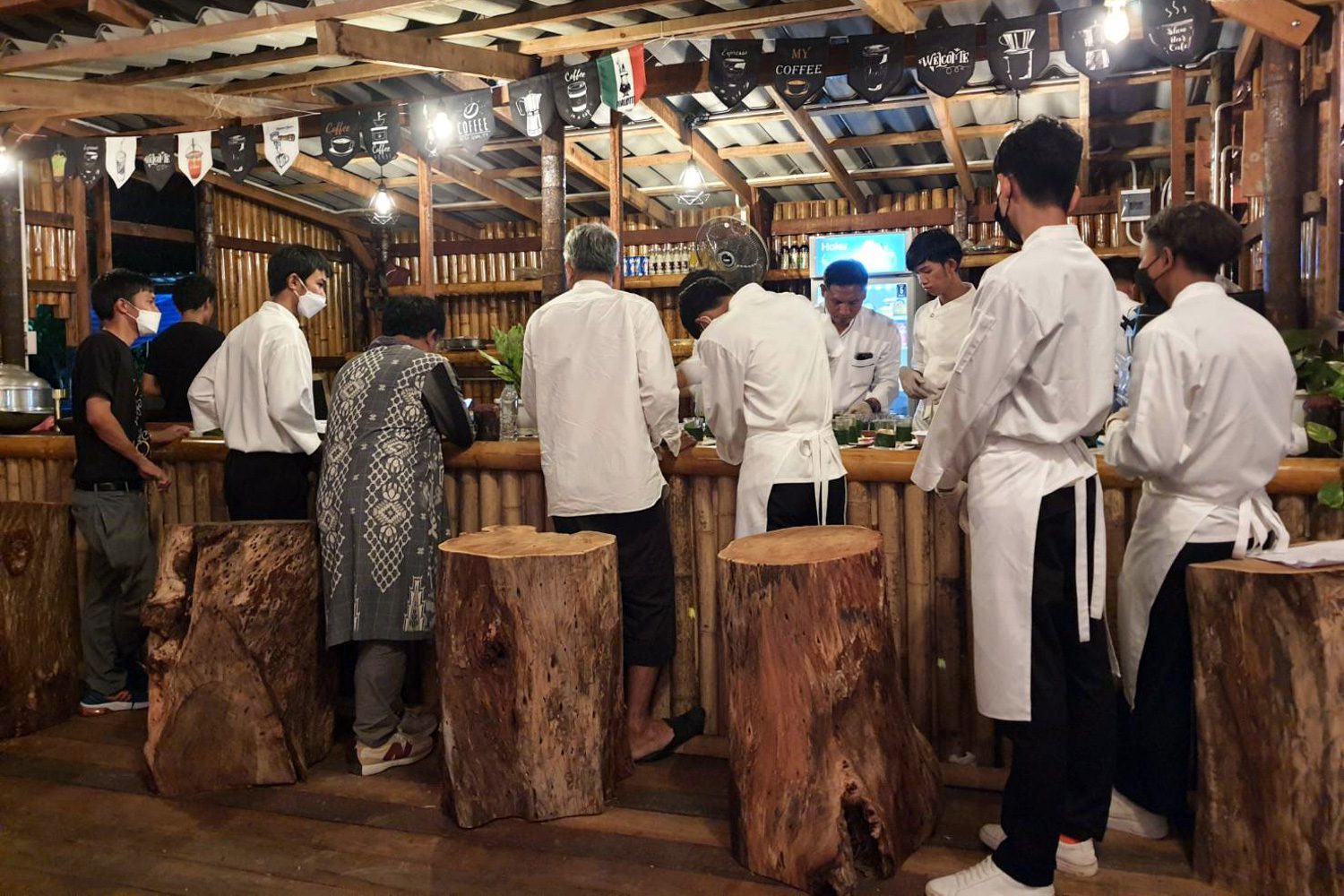
Throughout the three days, I witnessed creative individuals from all disciplines utilize their talents to solve the given tasks and challenges to the best of their abilities. Their efforts came to fruition in various shapes and forms, from exhibitions, workshops, talks to shops selling design products. Among them was The Memoirs of Taning by Sarinya Limthongtip who read Pattani with such love and respect, which is reflected in the admirable positive energy in her work. Today’s creators and designers are challenged not only by their role as people who make aesthetically pleasing and time-defining creations, but also by more intricate duties and constraints with significant public implications. I asked Santi Lawrachawee of PRACTICAL School of Design, who has been working in Pattani, how we can be sure that what everyone is trying to achieve can solve problems of this magnitude. No one knows the answer. Nothing guarantees that every issue will be addressed and resolved. That is why his workshop has chosen to leave the local young generation with an approach and guidelines that they can perhaps apply when needed.

We are all designers, according to Ezio Manzini’s book “Design, When Everyone Designs.” What Manzini meant by ‘all,’ refers to, not just some of us, but organizations, corporations, governmental agencies, towns and cities, regions, and states. The book describes a future in which designers assist and improve people’s everyday life and activities, as well as changes in the social scale brought about by various design projects. I witnessed these processes happening in Pattani. I saw how collaborative design and creative processes were facilitated, people coming together to share and exchange their skills and resources. Then, we returned home with an enormous toolbox overflowing with more diversified ideas than ever before, as well as the hope that we will be able to deal with all these difficult challenges in the future more effectively. I’ll see you later, Pattani. It’s been a pleasure meeting you.
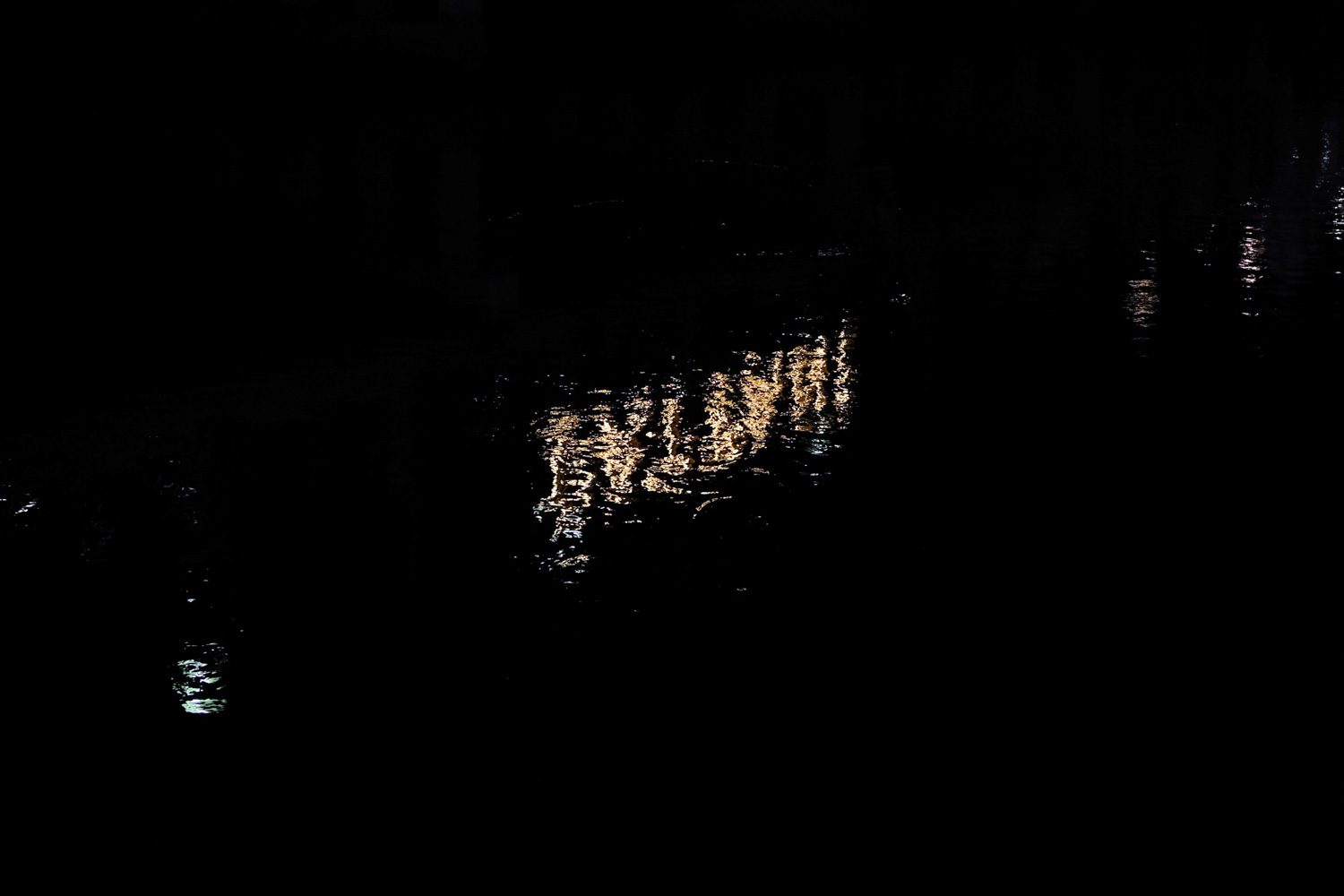
facebook.com/pattanidecoded



